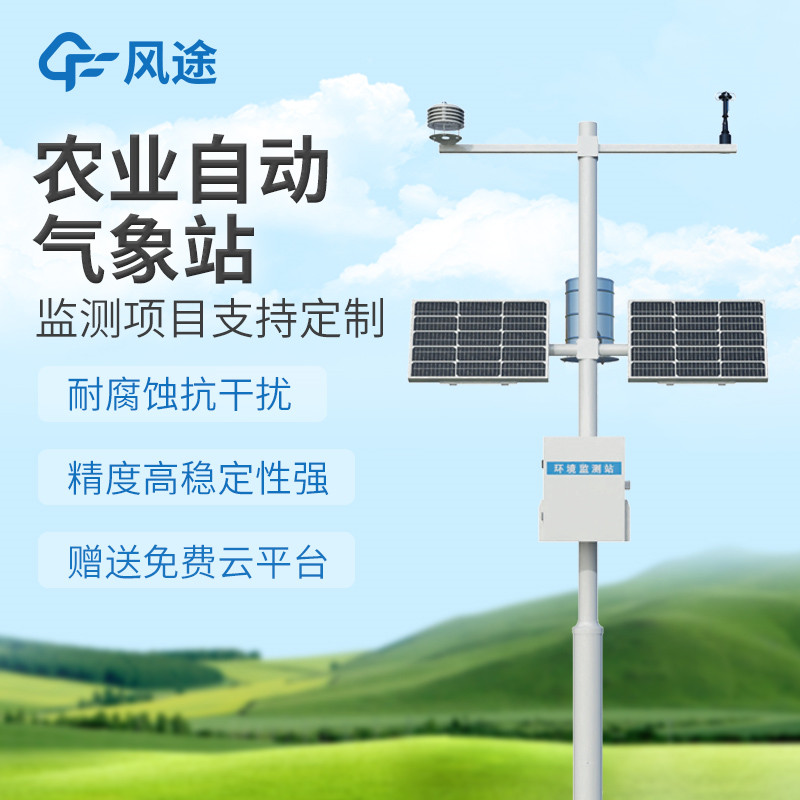Shandong Fengtu IOT Technology Co., Ltd
Sales Manager:Ms. Emily Wang
Cel,Whatsapp,Wechat:+86 15898932201
Email:info@fengtutec.com
Add:No. 155 Optoelectronic Industry Accelerator, Gaoxin District, Weifang, Shandong, China

Sales Manager:Ms. Emily Wang
Cel,Whatsapp,Wechat:+86 15898932201
Email:info@fengtutec.com
Add:No. 155 Optoelectronic Industry Accelerator, Gaoxin District, Weifang, Shandong, China
time:2025-06-04 09:41:14 source:Weather Station viewed:167 time
Yangmei, a characteristic fruit in southern China, is highly favored by consumers for its sweet and sour taste, as well as its rich medicinal and edible values. As a perennial plant, its growth is influenced by the comprehensive effects of the current year's climate, the previous year's environmental conditions, and the tree's nutritional status. Climatic conditions often trigger the "alternate bearing" (large and small yield years) of yangmei. Favorable weather with moderate wind and rain is conducive to a bumper harvest, while freezing damage during the flower bud or blooming period, yellow dust storms, excessive rainfall during the harvest period, and continuous drought in July and August easily lead to low-yield years. When the temperature is extremely low, such as the daily minimum temperature dropping below -9°C and recurring within 10 days, it can cause large-scale freezing damage and increase the mortality rate of yangmei trees. Additionally, yangmei growth has specific requirements for climatic factors such as temperature, precipitation, and light, requiring an active accumulated temperature of ≥10°C daily average temperature above 4500°C·d, suitable for growing in areas with an annual precipitation of over 1000mm (preferably over 1500mm). As a positive tree species with some shade tolerance, its quality often improves under weaker sunlight.
Under such complex climatic influences, Agricultural Weather Stations provide critical support for yangmei cultivation.
Agricultural Weather Stations are automated monitoring devices integrating multiple meteorological sensors and data processing systems, specially designed for agricultural production scenarios. They are used to collect, transmit, and analyze meteorological element data in farmland areas in real time, serving as key infrastructure for meteorological support in smart agriculture systems.
The hardware system of the monitoring station comprises multiple core components. Meteorological sensors include:
Temperature sensors: Monitor air temperature and soil temperature at different depths to analyze crop growth accumulated temperature and low-temperature risks.
Humidity sensors: Measure air relative humidity and soil moisture to assess water stress or waterlogging risks.
Tipping bucket rain gauges: Record precipitation and rainfall intensity in real time to assist in judging irrigation needs or flood risks.
Photosynthetically active radiation (PAR) sensors and sunshine duration recorders: Analyze light energy utilization efficiency and light stress.
Anemometers and wind vanes, barometers, and other components.
The data acquisition and transmission unit integrates multi-source data through an embedded system and supports multiple network transmission methods to send data to cloud platforms or local servers. The power supply system typically uses a combination of solar panels and storage batteries to ensure continuous operation in field environments. The software system consists of a data processing platform, model analysis modules, and a visualization interface, which not only calibrate and store real-time data but also automatically compare measured data with critical thresholds to trigger alarms. It displays various data and warning information to users via web terminals or apps.
During the yangmei bud stage, Agricultural Weather Stations can track the start time of daily average temperatures ≥10°C and accumulated temperature to judge bud development progress. During the blooming period, they provide real-time warnings of low temperatures during the flower bud stage to help fruit farmers prevent freezing damage in advance. During the fruit development period, they combine precipitation and light data to predict risks of fruit drop, cracking, or quality decline. The system also issues warnings for disasters such as droughts, floods, and continuous rain: triggering irrigation reminders when soil moisture is below critical values, predicting runoff risks based on rainfall intensity and soil water content, and prompting crown adjustment when light is insufficient. Based on the monitoring data, growers can implement differentiated fertilization and irrigation, evaluate variety adaptability, and apply pesticides precisely.

Agrometeorology is of great significance to agricultural production. It is related to the yield of field crops, affects the prevalence of pests and diseases, water supply and fertilization amount, etc., determines the types of crops to be planted and sowing time. Most agricultural techniques also de...
The solar automatic weather station uses solar energy to generate electricity. Because it is equipped with a solar panel, it can operate in the field for a long time without being affected by the power supply. Moreover, it is fully automatic and realizes remote weather monitoring. Users only need to...
In the audit of highway construction projects, the construction quality and operational status of highway projects have always been the top priorities of inspection. Traditional audit inspection methods, such as drilling and coring inspection, have many drawbacks that cannot be ignored. The inspecti...
Agricultural Weather Stations are small automatic weather stations specifically designed for agricultural ecological environments, aimed at monitoring the energy and material exchange between agricultural production environments and agricultural organisms.They can monitor various meteorological elem...